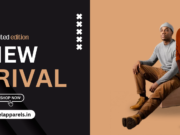Contributors to Scientific American’s July/August 2025 Issue
Writers, artists, photographers and researchers share the stories behind the stories

Jeffery DelViscio
Greenland’s Frozen Secret
In the spring of 2024 Jeffery DelViscio (seen freezing above), who is Scientific American’s chief multimedia editor, spent a month on a scientific expedition on the Greenland ice sheet. The sun never set, the wind never stopped, and it was often –20 degrees Fahrenheit even inside his tent. “After the first night, I was like, ‘I think I’ve made a huge mistake. This is the most uncomfortable I think I’ve ever been in my life,’” he says. “The weirdest part is how quickly you can acclimatize to it.” His body adjusted to the new normal after only a few days.
On the ice stream, survival was a group exercise for DelViscio, the researchers, and their survival specialists (including a polar bear guard). DelViscio witnessed the extraction of a special bedrock core, hoisted up from below the ice, which he documents in our cover story and his accompanying photographs in this issue. DelViscio, who has a master’s degree in earth science, once collected and studied similar cores from the seafloor.
On supporting science journalism
If you’re enjoying this article, consider supporting our award-winning journalism by subscribing. By purchasing a subscription you are helping to ensure the future of impactful stories about the discoveries and ideas shaping our world today.
“There’s memory everywhere,” DelViscio says. Cores like these reveal our planet’s climate history, and the rock below Greenland’s ice will help scientists learn when the island was last ice-free. “What this piece of rock remembers has incredibly large implications for how we live as a human species going forward,” he says.
Elizabeth Anne Brown
Pay Dirt
Every sunny winter weekend in Denmark, “gold is coming out of the ground,” says Elizabeth Anne Brown, a journalist based in Copenhagen. For years Brown lurked in a Facebook group where Denmark’s metal detectorists post photographs of intricate, hand-carved Viking treasures they’ve unearthed. “It’s infuriating when you’re at home on the couch and don’t know any Danish farmers you can ask if you can go metal detect on their property,” she says of her own predicament. Instead she began tagging along as a reporter. For her feature in this issue, Brown covered this incredible community of treasure hunters in Denmark—and the archaeologists who partner with them to document the country’s past. Wielding a metal detector requires a lot of physical and mental skill, she says; many detectorists can tell just from the beeps what type of metal object lies under the ground.
“I think some people are really just born with an innate desire to search and reach out for connection with the past,” Brown says. She considers herself one of them. “I grew up looking for pottery fragments and old bottles in a stream behind my grandparents’ farm” in Alabama, she says. As a journalist, she’s always searching for strange, odd creatures to report on—or, as she describes it, she’s “on the ‘lil fella’ beat.” For a second story in this issue, in the Advances section, Brown wrote about velvet worms, which are powerful, murderous and wonderful, she says: “Move over axolotls, move over tardigrades: velvet worms are the next big thing.”
Maia Szalavitz
Can Psychopathy Be Cured?
Journalist Maia Szalavitz often writes about addiction. It’s a heavily stigmatized condition, and she has experienced it firsthand: in her 20s she had addictions to cocaine and heroin. “Trying to figure out what the heck happened and how I went from straight-A student who got into Columbia to shooting up 40 times a day was a big part of how I ended up doing science writing,” she says. “I wanted to understand, How do we become who we are?”
For her feature article in this issue, Szalavitz explored what is perhaps the most stigmatizing label in mental health: psychopathy, particularly the callous and unemotional traits in children that can develop into adult psychopathy. “If you’re genetically prone to it, it’s as much not your fault as if you were genetically prone to addiction or bipolar disorder,” she says. But what does that mean when psychopathy often involves remorseless harm done to others?
“I’m always interested in the way our systems of morality intersect with medicine,” Szalavitz says. About half of children with these traits don’t progress to psychopathy in adulthood, and many of them “learn to do cognitively what other people naturally do emotionally,” she says. “I’m always interested in seeing how people deal with the hand that they end up being dealt.”
Amanda Hobbs
Fashion Forward
If you want to know the answer to a multifaceted question, put Amanda Hobbs on the case. “I’ve researched almost any topic you can think of,” she says, including lithium batteries, ancient Rome, fungal infections, space and epigenetics. Hobbs is a freelancer whose work often shapes the graphics in Scientific American. For this issue, she researched sustainable fashion for graphics by senior graphics editor Jen Christiansen, as part of the feature article by Jessica Hullinger. Today’s fashion industry is a complicated landscape (more so than she’d initially thought), and it’s challenging to identify viable options. “Is it really sustainable? Or is it just paying lip service?” Hobbs asks. She hopes the graphics will help people “get past the greenwashing.”
In college Hobbs was torn between biology and history. “Biology is literally dissecting something to see all the different parts. I’m much more into that figuratively. So I became a history major.” This knowledge helps her research bygone worlds to inform artistic re-creations of scenes from the past, such as Incan mummy rituals or Emperor Hadrian visiting a Roman fort. These reconstructions require a lot of historical detail about ancient peoples’ etiquette, fashion, and more. It’s “that sort of everyday lived history,” she says, that she loves digging into the most.









